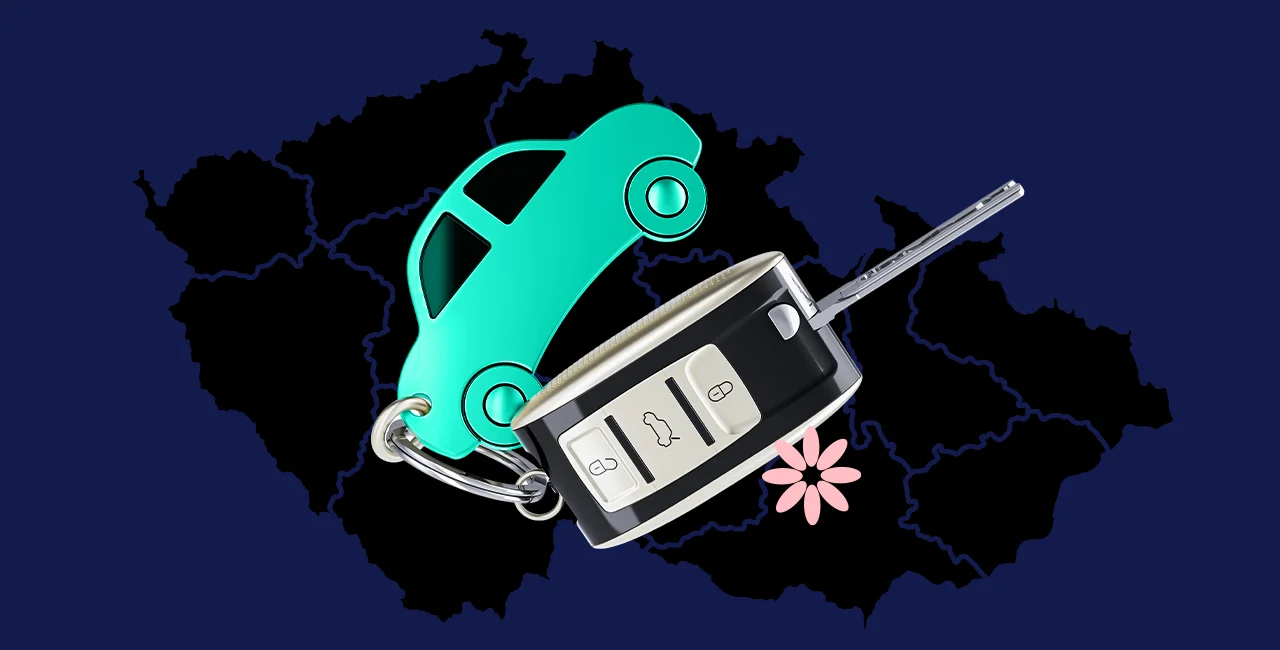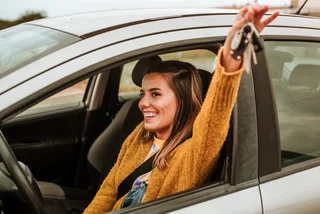Figuring out what steps you need to take in order to get a Czech driver’s license can feel overwhelming, especially for recent arrivals. Not only are you facing a language barrier, but the road rules here might look and feel vastly different than what you’re used to in your home country.
On top of this, there have been a number of recent changes to the law, impacting everything from speed limits to which third-country nationals are eligible for skipping the practical part of the driving exam.
It’s hard to know where to turn to get your questions answered and your nerves eased, which is why we asked Pavel Greiner to break things down for us. Greiner is the founder of Autoškola KING, one of the biggest driving schools on the Prague market. Over the last two decades, he’s guided new drivers as well as seasoned veterans looking for a deeper understanding of the local road rules and regulations.
Many expats overlook the fact that they’re legally required to switch to a Czech license if they are planning to stay (and drive) in the country for the long-term. Hitting the roadways without a valid license can lead to multiple problems, the least of which include stiff fines from the police and hassles over insurance claims.
With Greiner’s help, we have outlined the process for getting a driver's license in the Czech Republic.
EU vs. non-EU citizens: Getting licensed to drive in Czechia
Since the Czech Republic is a member of the European Union, anyone with a Czech license can drive in other EU countries and vice versa. This means if you have a license issued by another EU member state or Norway, Switzerland or Liechtenstein, you will not need to exchange your license for a Czech one, but you may choose to do so after residing here for more than 185 days.
For drivers hailing from outside the EU, foreign licenses can be used for up to one year. Some conditions apply as well. If your license does not meet Czech standards, you will need to obtain an International Driving Permit, sometimes also called an International Driver’s License. In the U.S., for example, it can be obtained from the AAA auto club.
Eventually, though, you will need to upgrade to a Czech license if you are staying here long-term. Those who obtain long-term residency in the Czech Republic must also get a Czech driver’s license within three months of securing their residency if they intend to drive.
A new law impacting non-EU drivers
Many countries have an agreement with the Czech Republic regarding the recognition of driver’s licenses, allowing those living here long-term to exchange their license from their home country for a Czech one. However, this process is not so simple for everyone.
Foreigners from countries that do not have a driver’s license recognition agreement with the Czech Republic – including the U.S., Canada, India, and Pakistan – were previously forced to repeat the whole driving school experience.
The time-consuming and costly process included logging hours on the road with a certified instructor, regardless of whether drivers knew their way around a wheel. Drivers also had to pass a written and practical exam before being issued a Czech driver’s license, recognized throughout the EU and Switzerland.
A new law, which went into effect at the beginning of 2024, makes upgrading to a Czech driver’s license a lot easier for third-country nationals who now need only take the final exam.
Greiner says if you want to pass on the first go, it's a good idea to spend at least some time on the road with driving school professionals who will help you brush up on the local driving laws. They can also help prepare you for the theoretical part of the exam.
Autoškola King instructors have helped many foreigners through this process. You must bring your current driver’s license issued in your home country and a doctor’s report older than 30 days to Autoškola King to register. You must also prove you have permanent residency in the Czech Republic or are staying there for at least six months via a rental agreement or confirmation of studies.
No matter what your nationality, those who want to drive on Czech roads must meet the age requirement, which was lowered to 17 at the start of this year. However, the new law, aimed at enhancing traffic safety, stipulates that young drivers must be under the supervision of a qualified mentor.
What type of license do you want?
To drive a standard vehicle such as a car, truck, SUV or recreational vehicle (most motorhomes and caravans) you'll need a B license.
With manual transmissions disappearing from the production lines at domestic car manufacturers across the Czech Republic, more driving schools are offering training courses centered around automatic-gear cars.
Greiner confirms that interest among both Czechs and expats in becoming licensed to drive an automatic vehicle is at an all-time high. Today, roughly 30 percent of Greiner’s clients request training on an automatic. He said he started noticing a growing interest in automatics among his students eight years ago.
When you receive the standard Group B license, the back of the card will have a note that reads “Group B restrictions on driving vehicles with automatic transmission.” This means you’re not allowed to drive a manual car or even rent one, regardless of whether you can use a vehicle with a manual transmission.
If you’re stopped by the police, and you happen to be driving a manual car despite your automatic license, you will be treated as if you were driving without a driver's license. In most cases, this means a heavy fine (CZK 25,000 to CZK 50,000) and potentially a suspension of your license for up to two years.
To upgrade the license later, a driver has to take another practical driving test but does not have to retake the written theory test. This means you’re not allowed to drive a manual car or even rent one, regardless of whether you’re actually capable of using a car with manual transmission.
Group B license| The holder of this license can operate a vehicle of up to 3.5 tons and transport a maximum of eight people, including the driver; a trailer weighing up to 750 kg can be attached, but the total weight must not exceed 3,500 kg; vehicles from group A1 (smaller motorbikes) with automatic transmission can also be operated.
International driving permits| The Czech Republic issues International driving permits for people with a Czech license who plan to drive in a non-EU country. The Czech-issued permit, which can be applied for at your local municipal office, can't be used in Czechia.
For motorcycles, there are four categories of licenses, depending on the age of the driver and the size of the vehicle. The A category license is for motorcycles more than 35kW and drivers over 24 years old. AM, A1, and A2 are for younger drivers and smaller bikes. The AM license allows people as young as 15 to operate a moped.
The AM license can also also be used for microcars, so people 15 and older can then drive at a speed limit of up to 45 km/hour.
Enroll in a driving school
While in some countries, would-be drivers can learn on their own and simply make an appointment to take a driving test, this is not the case in the Czech Republic. Here, you need to go through an accredited driving school. The basic course outline is defined by law, every driver must take the classes no matter what their skill level and experience.
Applicants need several units of driving instruction with an instructor from an accredited driving school. This includes both in-class preparation for the written exam and for a practical driving test. Driving school courses typically run for six to eight weeks. For the B-license, you need to spend roughly 28 hours driving (no more than two hours per day).
Following the course, a written and practical test must be passed before you can obtain your Czech license. The tests are taken at the relevant municipality. The driving school makes the appointment for you. The written test is taken before the driving skills test.
What to expect during the driving skills test
The actual driving instruction must be done in person. It includes not only driving in traffic but also first aid and vehicle maintenance. The driving test takes at least 30 minutes under the supervision of the examiner.
During the first part of the test, you will be asked to demonstrate basic knowledge and skills of preparing the vehicle before its use, starting, stopping, reversing and other maneuvers, and driving at a speed of under 30 mph. The second part of the exam tests the driver's response to traffic situations and driving at higher speed.
Making it official
After successfully passing all parts of the test, you will receive a certificate which is to be submitted to your local municipal office together with several other documents:
- Completed application form
- Valid proof of identity
- Proof of residence (for foreigners)
- Original driver’s license (in the case of renewals)
- A medical release from a doctor (upon turning 65 you’ll need to have a check-up and doctor’s proof that you're fit to drive; after you are 68 you'll need a check-up every two years)
Driver’s license applications must be submitted within six months of passing the test. There is an administrative fee of CZK 200. Once all the documentation is turned in and the fee is paid, your license should arrive in about 20 days.












 Reading time: 7 minutes
Reading time: 7 minutes 

























